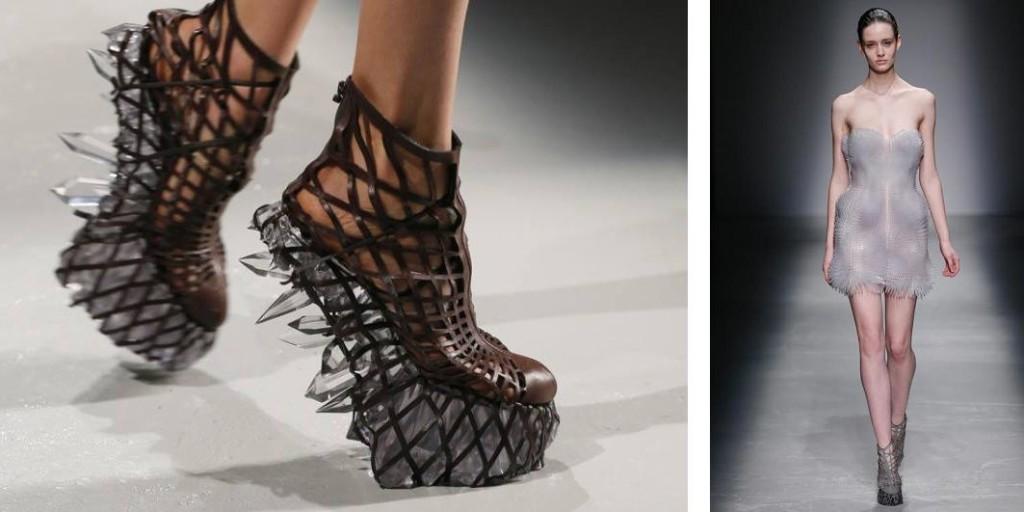Most Popular
A COFFEE DATE WITH THE SCOTTSDALE TWINS BEHIND THE FASHION CITIZEN
Meet Stephanie and Melissa Valenzuela, long-time Arizona residents and fashion enthusiasts, and, oh yeah, twins (the fraternal kind). The 24-year-old ... ...



3D Printing Will Disrupt Fast Fashion
Industry is, of course, completely centered on supply and demand. And while there are many facets to manufacturing and business, few areas are as fast-paced or as fickle as the fashion industry. Our simple, and often (ironically) unattractive vanity promotes an entire economy based on greed and speed–as well as seeing who can replicate and wear Kate Middleton’s latest navy-blue dress fast enough.
Most often focusing on want rather than need, the ‘fast fashion’ industry encompasses the complete opposite of originality or creativity, as it’s about getting copies of quality and runway fashion into stores like H&M at breakneck speed. And up until recently not much care was given to the how of making these piles of clothes, but more so to the how fast. As the horrors of sweatshops have come to light in one sensationalized story after another, consumers–especially the younger ones–are becoming more discerning–and concerned. The millennial generation is making it more and more clear that they would rather look for alternatives instead of having the trendy clothes on their backs made by someone suffering overseas and being paid pennies, if anything at all.
As the millennial generation is changing the channel or tuning out all together in terms of the traditional picture in business, economics, and lifestyle, some of those riding the retail gravy train–along with others–may have to look at their new target market–and employ radically different methods of manufacturing and retailing.
“The millennial customer does not believe in sweatshops,” Fashion Institute of Technology associate professor of Fashion Business Management Shawn Carter recently told racked. “This generation is very conscious of doing the right thing… They are holding these fashion supply chains accountable for making sure that it’s environmentally responsible, making sure it’s not made in sweatshop factories.”

From the point of view of innovators and creative types who enjoy independence and self-sustainability, 3D printing could not have arrived at a better time for offering alternatives. And from the perspective of many, it may disrupt the supply chain in an extremely positive way for consumers and the environment, as well as stopping the injustice and violence which are all part of sweat shops.
We have an entire segment of fashion that needs to be produced as quickly–and often as cheaply–as possible. We also have 3D printing available, which offers greater speed and affordability, and is already often connected with shoes and apparel. Together, the industry seems to have a great combination for a healthier version of fast fashion. Allowing the consumer to become much more involved in the process, this technology at the desktop or in the store skips a lot of the steps we are used to waiting on.
We’ve been following trends of 3D printing manufacturers working to get in on the action, like 3D Systems with theirFabricate application, where fashion design at the desktop becomes a cinch–but soon it may be that retailers themselves begin highlighting the use of 3D printers. So, while what we’ve been hearing all along is that we may just be able to buy 3D printers and do everything ourselves, what we did not consider is that retailers may offer the technology, as well as designs just awaiting, for fabricating directly from the store. As this new ‘disruption’ begins transforming manufacturing and economies globally, retailers are much better off to embrace and offer 3D printing than to battle what could be a futile war.
“I feel like everyone is trying to keep up with the speed to market and speed to delivery,” says Andrea Bell, Think Tank senior editor for trend forecasting firm WGSN. “At some point, fashion is going to have to say, ‘I’m not going to chase it anymore.'”
Cashing in on the fact that many will not purchase their own hardware or want to maintain it, many lower-cost fashion storefronts can become mini fashion 3D printing hubs on their own.
“I think what you’re going to have, and what’s going to change fashion, [will be] more consumers designing what they want in partnership with these fast fashion retailers,” FIT’s Carter says. “That’s what 3D printing enables a consumer to do; to participate in the design process.”
So while much of the future of clothing retailers still may not truly include high fashion, it may begin to introduce and then rely heavily on high-tech processes from within their own factories to inside the stores where customers may come in with a concept or a picture from Vogue, and be able to 3D printing something right on the spot–or leaf through digital designs available in stores and produce them there.
“With 3D printing and things like that, you can, in 10 years, go in and say, ‘I like this bracelet, I’m going to make it and print it out in store,'” says Bell.
Fast fashion will most likely only become faster, as we are certainly not a society–or global economy–with any plans to slow down most aspects of consumerism–and especially that of fashion. Companies like Forever 21, H&M, and Zara may have to change their manufacturing structures enormously over time, offering complete transparency to the millennials–and beyond–who demand it. While how those making the clothes are treated and paid will continue to be a serious concern, so will effects on the environment and a greater need for everyone to be accountable in recycling materials.
see more at: plus size formal dresses